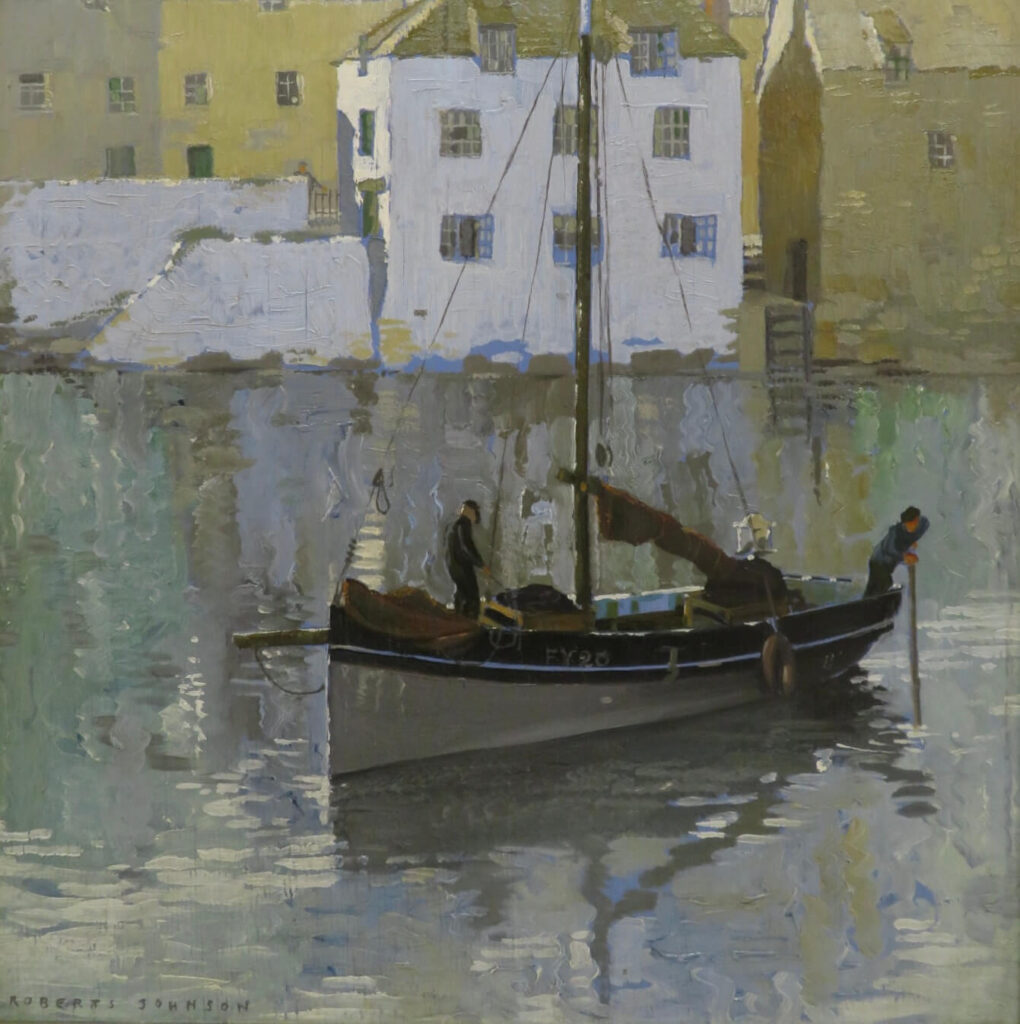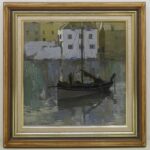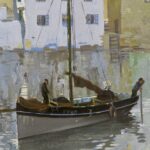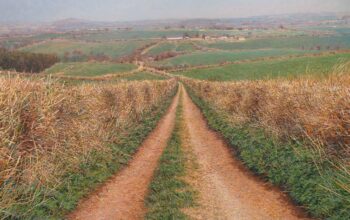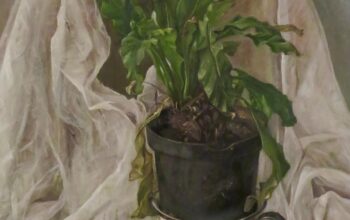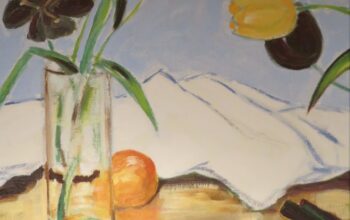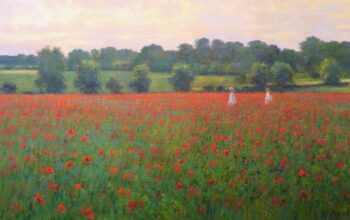Frederick Roberts Johnson
ARTIST: Frederik Roberts Johnson (1900-1986) British
TITLE: ” Polperro Harbour”
SIGNED: lower left
MEDIUM: oil on board
SIZE: 47cm x 47cm inc frame
CONDITION: excellent
PRICE: £sold
DETAIL: Frederick Roberts Johnson (Fred) rarely used his own name to sign his work. Occcasionally he used his initials, ‘FRJ’ but due to his admiration for the American Essex automobile, adopted the pseudonym ‘Essex’ or ‘Sax’. During the late 1920s and 1930s he became a very successful illustrator, creating cartoons, caricatures and other ‘funnies’ for such publications as Punch, Everyman and Time and Tide – the latter being a weekly left-wing literary review magazine.In 1924 he and his great friend, the artist Arthur WRAGG, visited Polperro for the first time and fell in love with the place. Frederick Thomas Nettleinghame, a publisher and ‘tourist operator’ had arrived in Polperro the year before, setting up a business dealing in artefacts for the tourist market. He found the two young artists to be enthusiastic assistants in the production of burnt wood designs, or ‘pokerwork’. Subsequently Fred Roberts Johnson and Wragg rented a cottage in the village each summer. This continued throughout the 1930s, during which time they became integral members of the Polperro community. In addition, Fred acquired an old stone net loft in the village, for use as a studio. His friendship over the years with the local fishermen resulted in the creation of a group of fisherman’s portraits, which were hung in the Polperro Museum.
His most well-known commercial art was a series of caricature portraits, signed ‘Essex’, for the Punch’s People in Punch series in the mid-1930s. His most widely known advertisements appeared not only in periodicals but were on display in London buses and the Underground, promoting ‘Abdulla’ cigarettes.Alarmed at the rise of Fascism, alongside Wragg, Fred became actively involved in the left-wing newspaper The Tribune, his political cartoons representing a considerable contribution to the early years of the publication.Fred’s family believe that the artist struck up a close friendship with the exiled Oscar Kokoschka in Polperro, and indeed may have worked alongside him. During the war years Fred served in the Home Guard, and together with an engineer friend, made aircraft and weaponry parts, which exempted him from conscription.His life was transformed when he met in the local pub a visitor to Polperro, Mimosa Wilson Cameron, known as Mosa. An aspiring opera singer, Mosa was in Polperro to join her father who had retired to Cornwall. She and Fred married in 1942, acquiring the property ‘Westhaven’, with its own separate studio. Their daughters Kirsten and Prudence were born in 1946 and 1948. The family moved to a bigger property, ‘Chy-an-Kerris’ on the Higher Warren, in 1949. In 1957 they moved to Totnes as their daughters were being educated at Dartington Hall, but they retained a property in Polperro, where they spent weekends and holidays.While carrying out research for his book ‘Polperro – Cornwall’s Forgotten Art Centre’ (see REFERENCES below) the art historian David Tovey unearthed around 250 beautifully executed easel paintings by Roberts Johnson, who evidently had no desire to exhibit or sell them. His marriage, and the success of his commercial work, had given him financial security, so it seems that he was able to paint purely for pleasure. He employed a wide range of genres, including still life, street scenes, fishing and harbour scenes … even producing experimental paintings showing the influence of cubism and surrealism.
(biography extracted with thanks from Cornwall Artists Index CAI)

